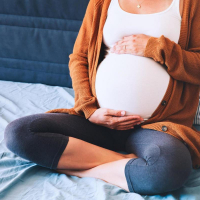
An article highlighting an innovative approach developed by WHO and Cochrane to ensure that global recommendations on maternal and perinatal health are up to date was recently published in BMJ Global Health.
The Cochrane Pregnancy and Childbirth Group has a long-standing collaboration with WHO on the development and updating of Cochrane reviews that inform WHO’s global maternal and perinatal health guidelines.
Now, that close collaboration has gone a step further in the development of a ‘living guidelines’ approach to ensure that the latest evidence in maternal and perinatal health can be translated into practice as quickly as possible.
Updating recommendations
WHO has produced over 400 evidence-based global recommendations on how best to improve health during pregnancy, childbirth and the postpartum period in the last 10 years. Ensuring that all these recommendations stay up to date and reflect the latest evidence is therefore a significant challenge.
Currently, guidelines are typically updated every few years. Yet, when strong new evidence becomes available, not reviewing the updating recommendation in a timely manner could adversely affect people’s health and wellbeing. At the same time, there are recommendations for which the evidence base rarely changes, and so an update does not seem the best use of limited resources.
The ‘living guidelines’ approach
The ‘living guidelines approach’ uses a combination of ongoing literature surveillance to inform prioritization, rapid appraisal of the potential impacts of new evidence on recommendations and accelerated updating of high-priority Cochrane systematic reviews for high-priority questions.
The aim is for the latest evidence and updated recommendations to reach healthcare professionals worldwide as quickly as possible.
So far, 25 WHO maternal and perinatal recommendations have been updated using the ‘living guidelines’ methodology, including on postpartum haemorrhage, one of the leading causes of maternal death worldwide.
Further information:
- Visit the Cochrane Pregnancy and Childbirth website
Read the BMJ Global Health article on the ‘living guidelines’ work
WHO’s recommendation on tranexamic acid for the treatment of postpartum haemorrhage
- WHO’s recommendations on uterotonics for the prevention of postpartum haemorrhage
